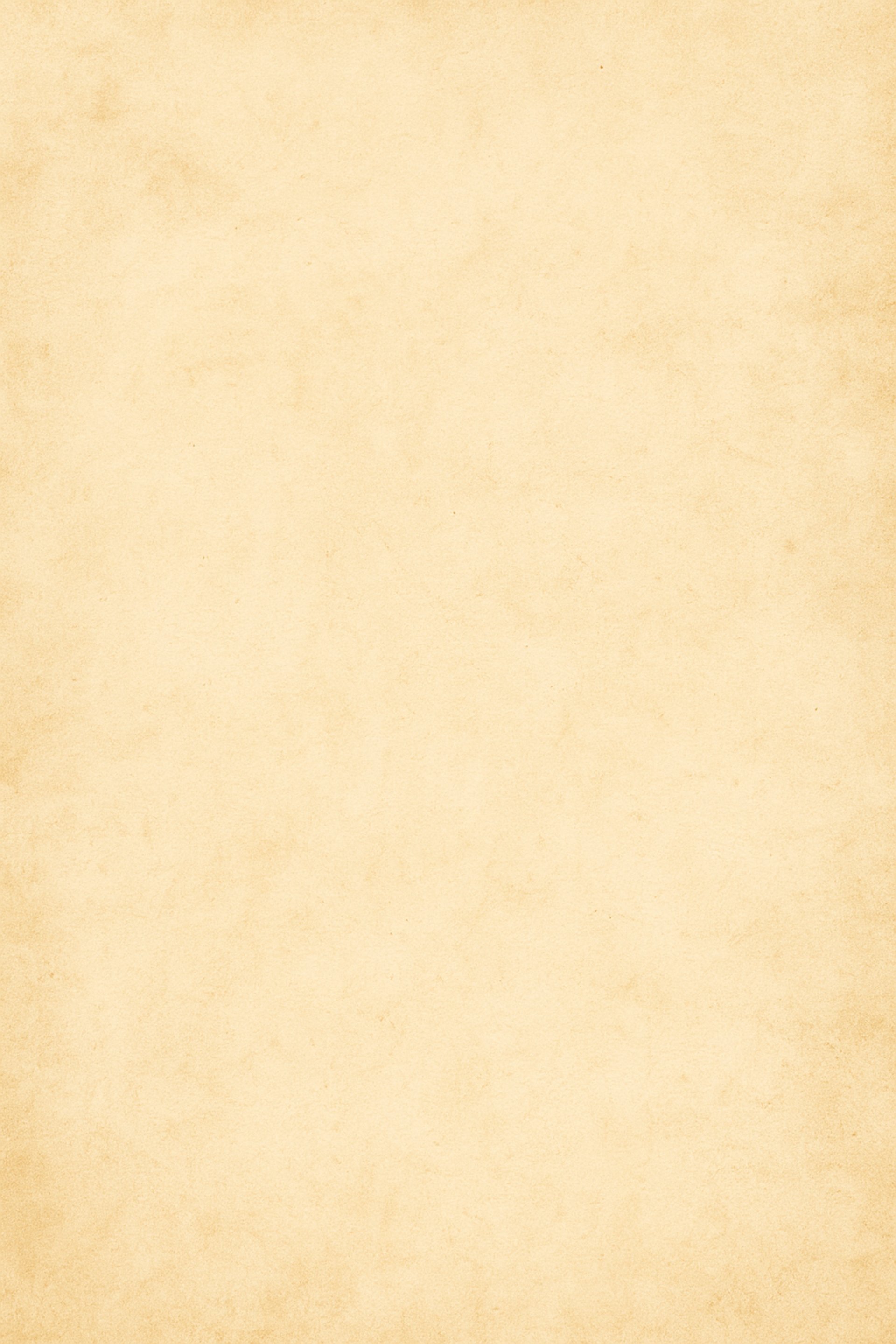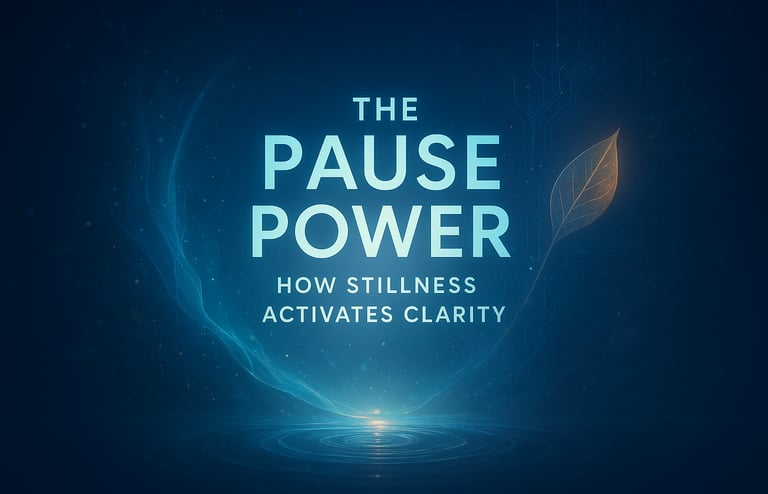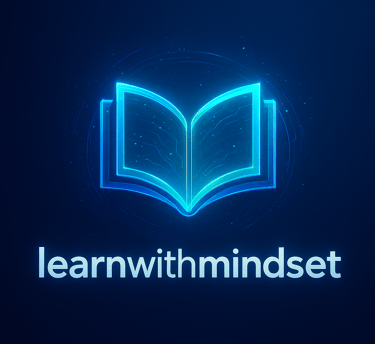
“The Pause Power – How Stillness Activates Clarity”
In a world that glorifies constant movement, busyness has become the new badge of honor. People measure worth by how full their calendars are, how quickly they reply, and how many tasks they can juggle at once. Yet beneath all that speed lies an uncomfortable truth — the faster we move, the less we see. When every moment is filled with doing, there’s no space left for being. That’s where the hidden strength of pause comes in.
11/14/2025



“The Pause Power – How Stillness Activates Clarity”
In a world that glorifies constant movement, busyness has become the new badge of honor. People measure worth by how full their calendars are, how quickly they reply, and how many tasks they can juggle at once. Yet beneath all that speed lies an uncomfortable truth — the faster we move, the less we see. When every moment is filled with doing, there’s no space left for being. That’s where the hidden strength of pause comes in.
The pause is not the opposite of progress; it is the foundation of it. The greatest transformations, decisions, and breakthroughs often happen not when we rush forward but when we stop to breathe, to think, to see clearly. Stillness is not weakness — it is power in disguise. The pause is that quiet space between impulse and response, between thought and action, between chaos and clarity. In those few seconds of stillness, you have the power to reshape your emotions, your reactions, and even your destiny.
Imagine this — you receive a message that instantly irritates you. Your first instinct is to reply with frustration. But if you take a few seconds to pause before reacting, you give yourself a moment to breathe, to think, to understand. What happens next is extraordinary: clarity replaces confusion, and wisdom replaces impulse. The situation remains the same, but your approach transforms entirely. The pause becomes the invisible line separating regret from peace.
The power of pause is ancient, yet more relevant today than ever before. In Vedic philosophy, stillness was considered sacred — a state where the inner self aligns with the universe. The sages believed that silence wasn’t emptiness; it was full of energy and awareness. The act of pausing wasn’t seen as inaction but as a return to your original nature — calm, centered, and conscious. In modern times, psychology agrees. Research in neuroscience shows that even a brief pause activates the prefrontal cortex, the part of the brain responsible for decision-making and emotional regulation. This means that a moment of stillness can literally rewire your reaction.
We live in an age of instant everything — instant messages, instant feedback, instant gratification. The mind has become addicted to speed, scrolling endlessly from one stimulus to another. But speed without awareness is like running blindfolded. You move fast, but you lose direction. The pause acts as your compass. It slows the mind enough to see the road ahead clearly. It helps you notice what truly matters, what doesn’t, and where your energy is best spent.
In the natural world, every rhythm includes rest. The heart beats — then pauses. The day rises — then fades into night. Even the ocean waves crash — then retreat in silence. Without the pause, rhythm collapses into chaos. So why do we treat our own pauses as weakness? The truth is, without stillness, even the strongest energy burns out.
Think of an archer. Before releasing the arrow, they pause — holding breath, steadying aim, aligning focus. That brief stillness determines whether the arrow hits the target or misses it entirely. The pause doesn’t delay the result; it defines it. In the same way, when you learn to pause before making a choice, speaking a word, or taking an action, you improve the accuracy of your life.
There’s a beautiful concept in Japanese culture called “Ma” — the space between things. It’s the silent gap that gives meaning to sound, the pause that gives rhythm to movement, the emptiness that gives form to art. Without “Ma,” everything becomes noise, chaos, confusion. The same applies to our thoughts and emotions. When you create inner space — when you allow a pause — life begins to breathe again.
Let’s take a real-life scenario. A young professional is under pressure at work. Deadlines pile up, emails flood in, and frustration builds. Every decision feels rushed, every conversation tense. One day, she decides to stop for five minutes before starting her tasks. She closes her eyes, breathes deeply, and allows silence to wash over her mind. When she returns to her work, she feels centered. What took her hours before now takes less time. Her clarity increases. The difference isn’t in the workload; it’s in her mental rhythm. She discovered the magic of pause.
The pause isn’t just about stress relief — it’s about reclaiming control. When you pause, you remind your mind that you are in charge, not your emotions, not your impulses, not your environment. You reclaim your right to choose your response instead of reacting automatically. In that moment, you shift from being a prisoner of circumstances to being the author of your actions.
There’s also a spiritual dimension to the pause. In meditation, the pause between the inhale and exhale is where awareness expands. Yogic philosophy calls this space “Kumbhaka” — the retention of breath — believed to be the gateway between the body and the soul. In that suspended moment, time slows, and consciousness sharpens. You touch a deeper truth — that peace isn’t found by escaping the noise but by creating silence within it.
Modern leaders, athletes, and creators also use the pause consciously. A public speaker pauses before delivering a key point — to let the words sink in. A musician pauses before the next note — to create tension and beauty. A chess player pauses before moving a piece — to see the unseen possibilities. The pause doesn’t stop the performance; it defines it. In fact, silence gives sound its power.
In daily life, the pause can take many forms — a deep breath before replying to anger, a short walk before making a big decision, or even a quiet moment of gratitude before starting your day. Each pause you take reconnects you with your inner compass. It reminds you that clarity is not found in noise but in stillness.
You can practice the power of pause through a simple exercise:
Whenever you feel overwhelmed, stop and take a slow breath in. Count to three. Exhale slowly. Ask yourself, “What truly matters right now?” Most of the time, you’ll realize that the thing causing your stress isn’t as big as it seemed. The pause allows perspective to enter, and with perspective comes peace.
Even in conflicts, a pause can change everything. Imagine two people arguing. Each word fuels more anger, more misunderstanding. But if one person pauses — just for a second — the entire energy shifts. That moment of stillness breaks the pattern of reaction. Space enters the conversation, and with space comes understanding. The pause becomes a bridge between hearts that were moments ago divided by words.
Pausing doesn’t mean you’re uncertain; it means you’re wise enough to choose your next move carefully. The best decisions come from calm awareness, not emotional turbulence. When you pause, you rise above the storm and see things from a higher perspective. From that clarity, every choice you make aligns with purpose, not pressure.
The irony of life is that the more you slow down internally, the faster you progress externally. When your mind is calm, your actions become precise. You waste less time correcting mistakes made in haste. You communicate more effectively, work more efficiently, and connect more deeply. Stillness, paradoxically, accelerates success.
There’s also healing in the pause. When we experience loss or pain, our first instinct is often to distract ourselves — to fill the silence with activity. But true healing happens when we allow ourselves to pause and feel. When we sit quietly with our emotions instead of running from them, we begin to understand them. That understanding dissolves pain into wisdom. The pause becomes a sacred space where wounds transform into strength.
So, the next time life feels chaotic, don’t rush to fix everything. Pause. Breathe. Observe. The answers you’re searching for are often hidden beneath the noise of constant motion. The pause doesn’t remove your challenges, but it gives you the clarity to face them with calm confidence.
Remember — the sky doesn’t lose its calm when clouds pass; it simply waits. Be like that sky. Patient, steady, aware. The clouds will move, the noise will fade, and your clarity will return.
Stillness is not the absence of life; it is the awareness of life unfolding. In every pause lies a doorway — to wisdom, balance, and inner strength. Step through it.
Because sometimes, the most powerful move you can make — is no move at all.
Inspiration
Empowering learners to achieve their fullest potential.
Growth
Success
© 2025. All rights reserved.
Mrs. Sadhana Ware
